A Real Corker
A prompt to encourage your practice of creativity this week from Riversider and local author Larry Burns.
Explore the impact of the man behind the name of Riverside’s first park, a partner in the dream of the Mt. Rubidoux Hotel, and a pioneer in early transportation initiatives.

The city's oldest park, White Park, is on Market Street and Ninth Street in downtown Riverside. Albert Starrett White is behind the name of what was initially called City Park.
Albert White was born in Belfast, Maine, on December 15, 1839. After finishing school, White moved to New York, where he later joined Captain George Gilchrist to form Gilchrist, White & Company, a mercantile business.
When he contracted pneumonia in 1872, his physician prescribed a warmer climate. Traveling west, he arrived in Riverside, where he stayed the winter with the family of Goerge Garcelon, also a native of Maine. Coming to Riverside each winter, White moved into the newly opened Glenwood Hotel, also known as the Old Adobe, in November 1876, the first paying guest in the Miller family's venture in the hostelry business. By 1882, Albert White liquidated his assets in New York and made Riverside his year-round home for the rest of his life.
After settling in Riverside, Albert White developed a very close relationship with the Miller family and became very interested in the affairs of his adopted city. In 1903, Frank Miller opened the first wing of the Glenwood Mission Inn, the U-shaped Mission Wing. Albert White moved into a first-floor apartment that opened onto Orange Street. In contrast to the Mission-style furniture of the Mission Inn, White furnished his apartment with colonial furniture and personal artifacts. He lived here until he died.
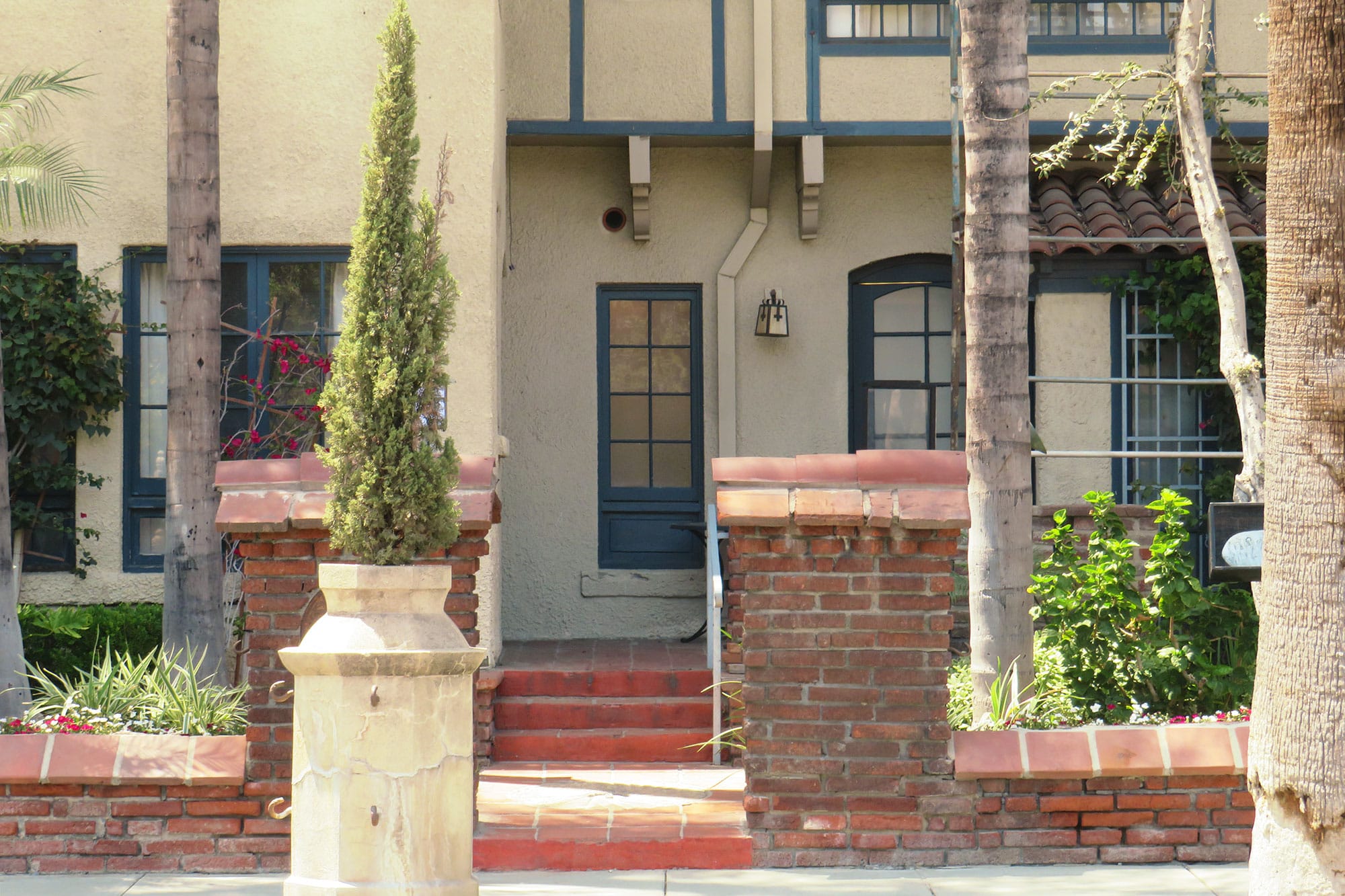
An early investment of White’s was 40 acres of land along Magnolia Avenue at the corner of Jefferson Street, where he planted orange groves. He soon planted fan palm trees to line his property along Magnolia Avenue. He paid $50 per acre for the twenty acres along Magnolia and $30 per acre for the back twenty acres.
White, along with Elmer Holmes and James Roe, were instrumental in forming the Riverside Library Association. He was an early Loring Opera House Company director and soon jumped into other business affairs. In 1885, he purchased 80 acres of land east of the Santa Fe train station and started subdividing the property into lots—White’s Addition, as it became known. White and Miller joined together in White & Miller Real Estate to market properties.
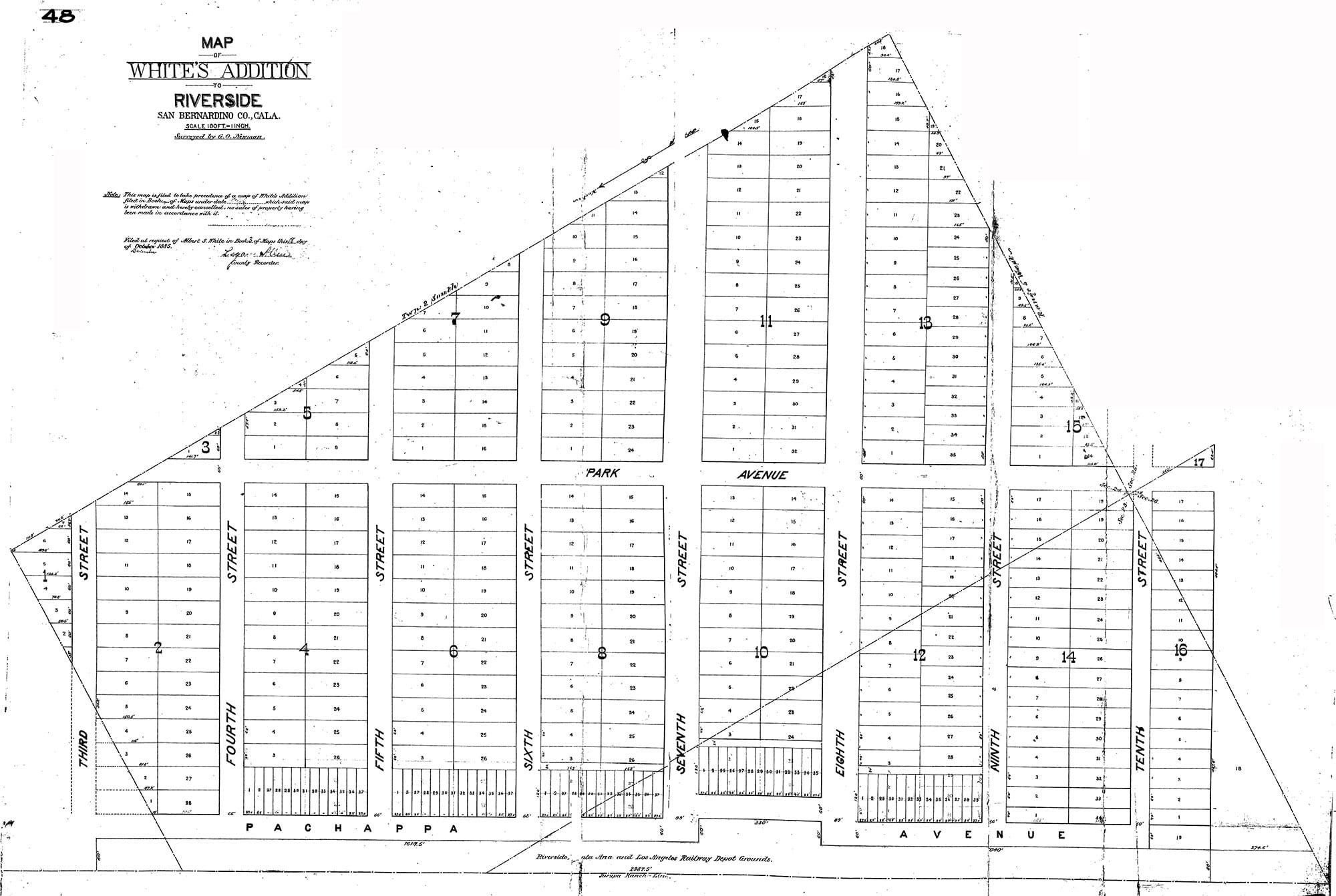
The Rubidoux Hotel Association was formed in 1887 with Albert White as president. They planned to build a resort hotel at the foot of Mount Rubidoux to rival Hotel Coronado in San Diego. The design was described with a proposed 240 guest rooms as a “combination of English, Gothic, and Swiss with a touch of Old Holland.” Foundation stones were laid, and walls even went up. The bank crash of 1888 stopped construction, and the hotel was never finished. White was not trying to compete with his good friend, Frank Miller, who was attempting to sell the Glenwood.
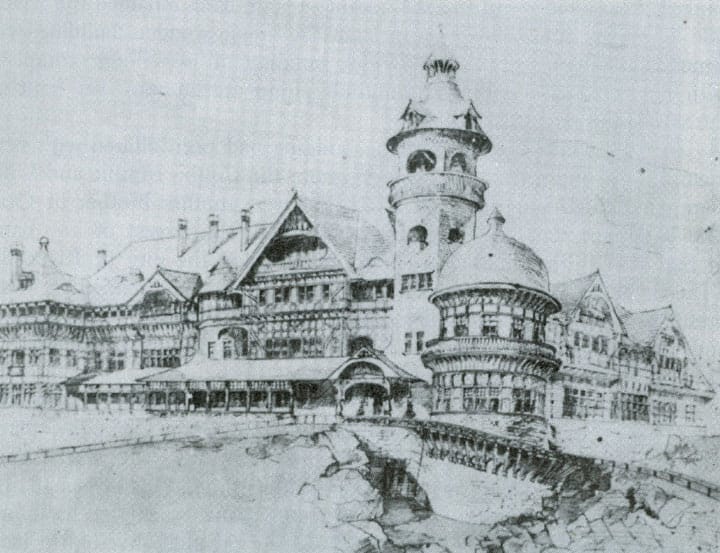

In 1875, Samuel C. Evans worked out a deal in which the one-square-block plaza in the center of the business district (bounded by Seventh, Main, Eighth, and Market) was traded for four blocks just a little southwest (bounded by Eighth, Chestnut, Tenth, and Market). The downside was that the four blocks were lowland with the Lower Canal running through and were basically swampland, good for duck hunting. Dr. Clark Whittier, in 1883, agreed to fill in some of the lowlands for a park if he was granted the two outer sections along Tenth and Eighth for a Sanitarium and housing. The park was born and slowly developed.
Franz Hosp, a local horticulturist, presented plans for the park's ornamentation in early 1888. Hosp and Albert White planted many trees, shrubs, and flowers in the new park. Both men were responsible for the extensive collection of cacti transplanted to the park, which claimed to have the largest cactus collection.
The city’s first park was originally named “City Park” and officially deeded to Riverside on November 14, 1889. As the first park superintendent, Albert White took a particular interest in the park and spent numerous hours turning the swampland into a luscious park for the citizens of Riverside to enjoy.
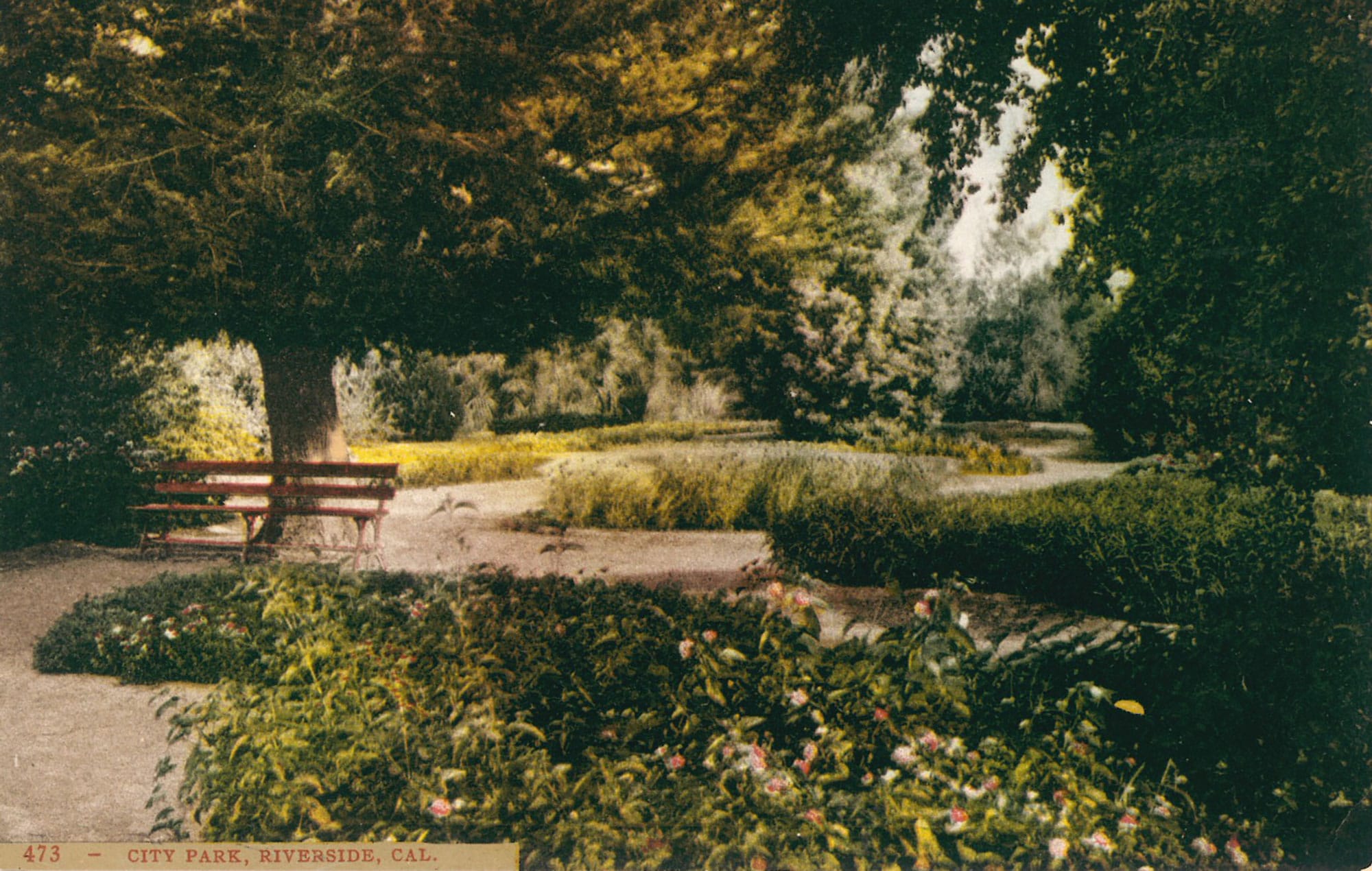
On October 14, 1899, the city renamed the park White Park after Albert in honor of his work. That evening, a special banquet was held at the Mission Inn.
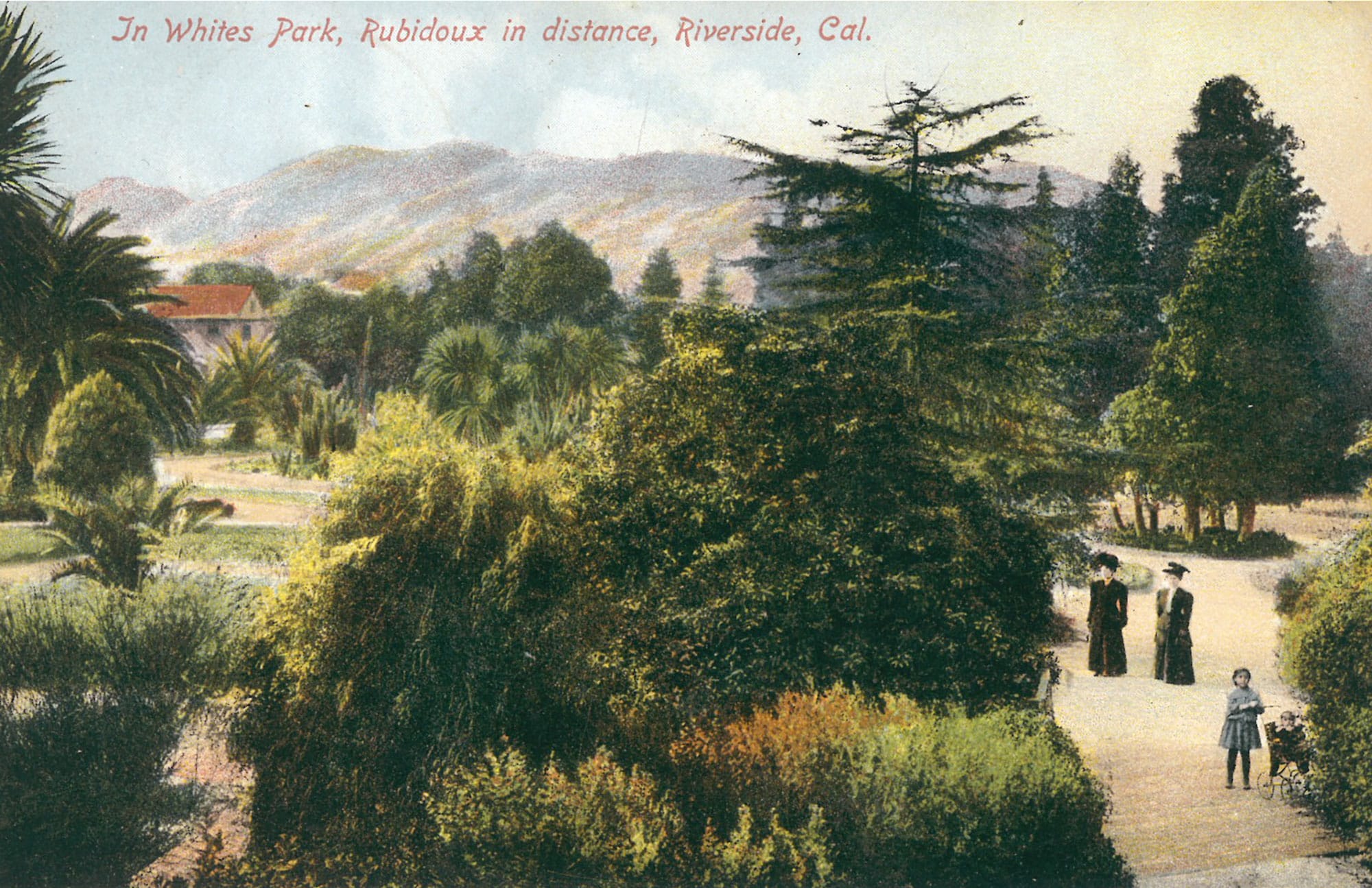
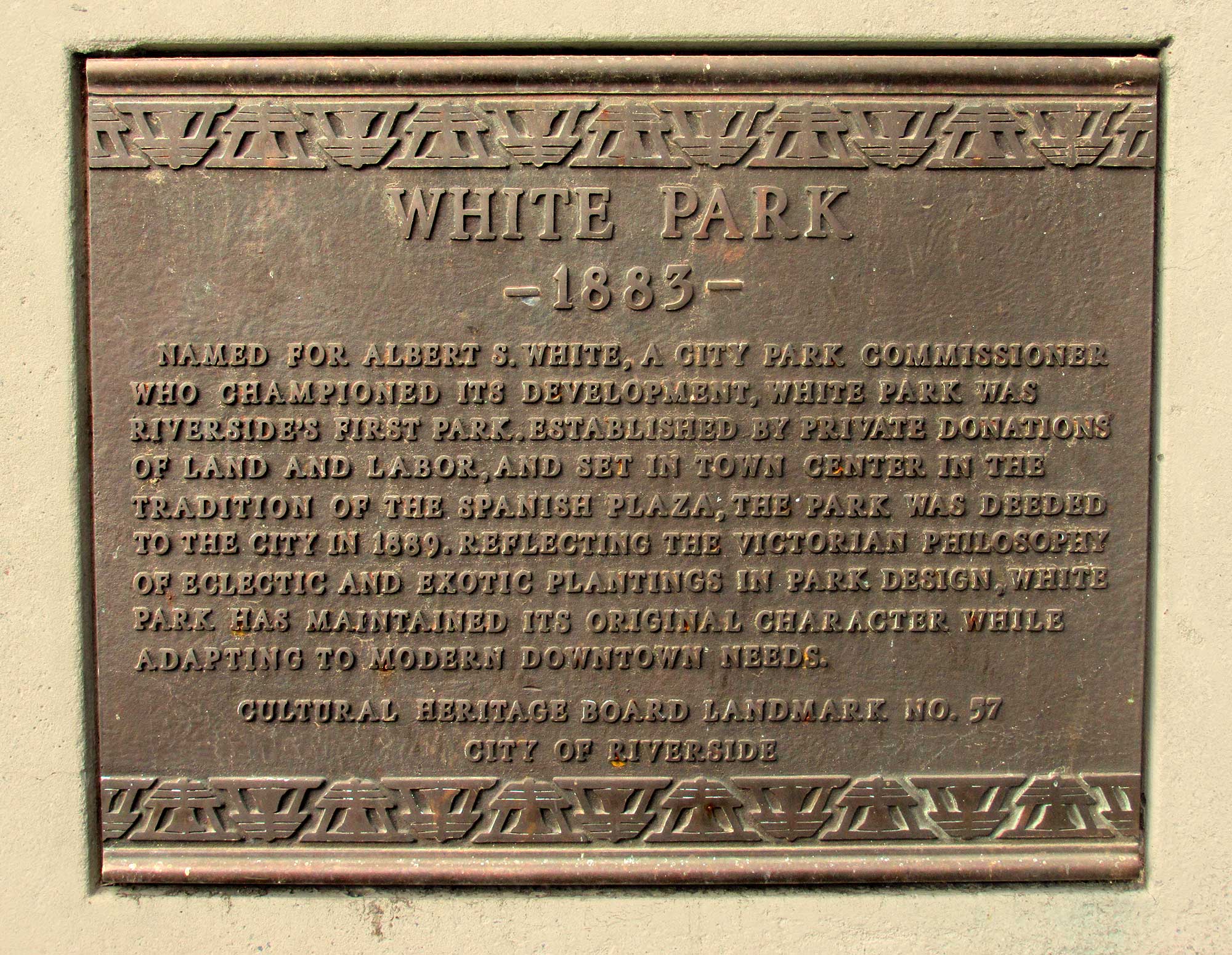
What other ventures in Riverside's early history were influenced by Albert White? Here are just a few.
Albert White and Henry Rudisill organized the first California Citrus Fair in Riverside on February 12 and 13, 1879, in the Odd Fellows’ building. Over 275 plates of oranges from all over the area were displayed. They soon started to raise funds to build the Pavilion on the northwest corner of Main and Seventh to hold future Orange Fairs. Unfortunately, a fire destroyed the Pavilion in April of 1888.
When Riverside was incorporated in 1883, White was one of the original Trustees for the City of Riverside. Ten years later, after the County of Riverside was formed, he was one of the first county supervisors, serving as chairman. In the History and Directory of Riverside County 1893-4, he is listed as “White, Albert S. county supervisor, city trustee and horticulturist, office Loring Block, res Glenwood.”
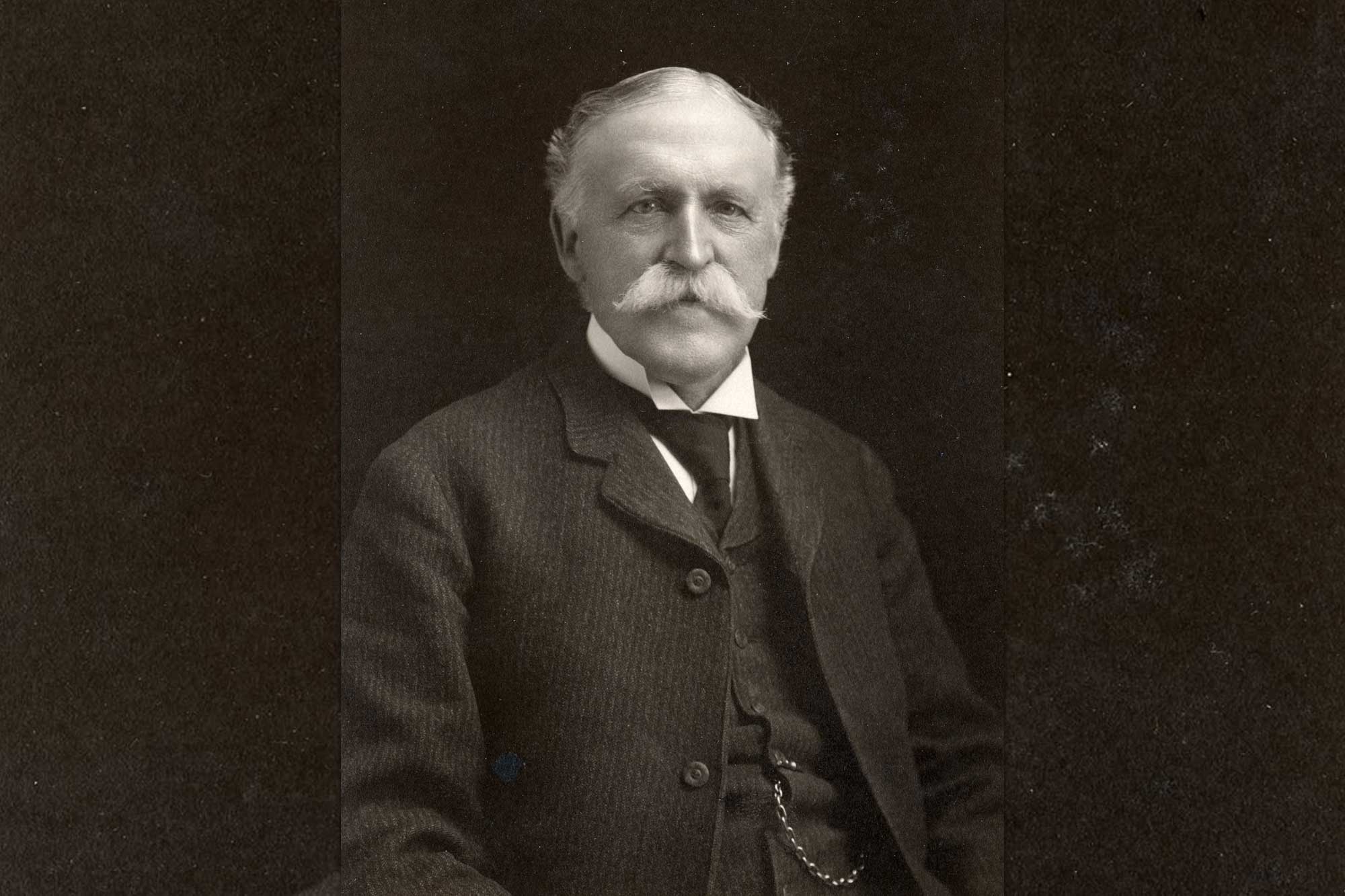
Mr. White was the first person in Riverside to own a bicycle, but, as an early newspaper reported, he “never tamed the fiery steed.” That honor fell to John G. North, son of Riverside founder John W. North. The early cycles had a large front wheel and a tiny wheel in the rear.
Again, along with Frank Miller, White was one of the original Riverside and Arlington Electric Railway directors when the trolley line was incorporated in 1886.
In 1887, he was part of the Riverside Improvement Company and president and principal owner of the Arlington Heights Water Company.
When Charles Loring, an annual winter visitor from Minneapolis, built the Loring Building and Opera House on the corner of Main and Seventh Streets, Frank A. Miller and Albert S. White worked behind the scenes to support this project.
As a member of All Souls Universalist Church, he was very active in the campaign to build the elegant English Gothic sandstone church on the corner of Lemon and Seventh Streets. The stained-glass windows in the sanctuary memorialize early Riverside church members, and one of the windows honors Albert White.
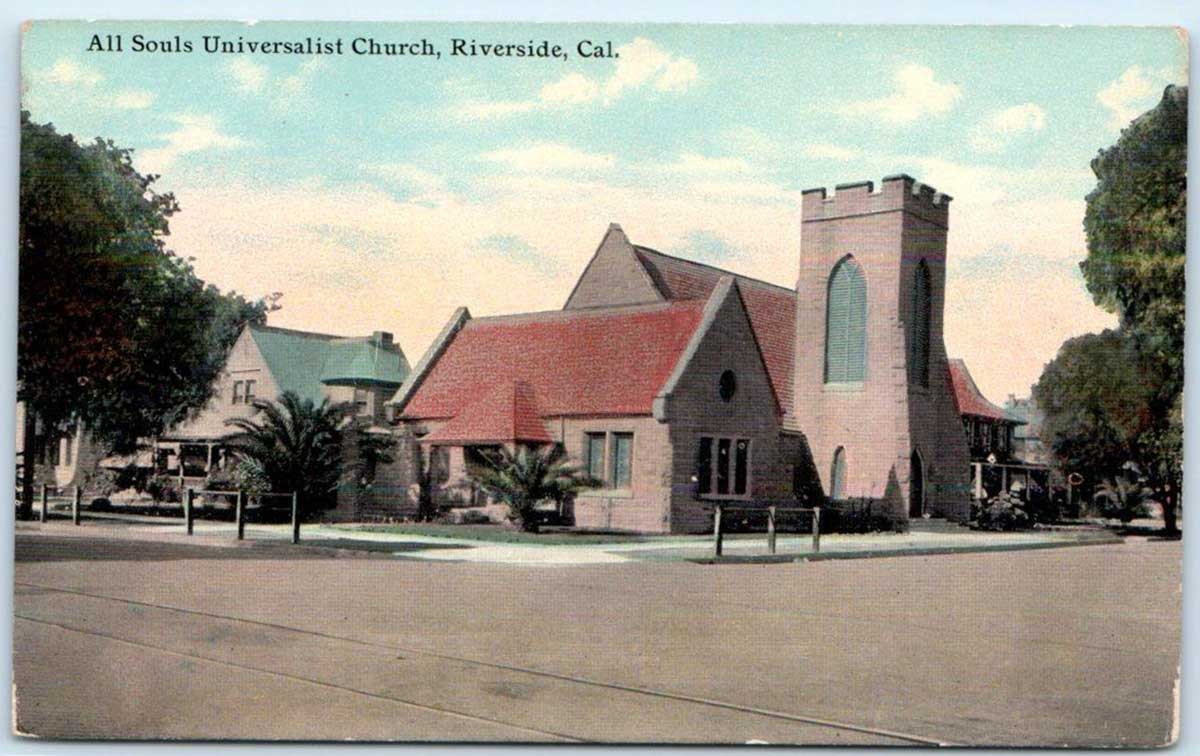
Albert White, in many ways, became part of the Miller family. He often accompanied the family on trips and vacations. He lived in his apartment in Frank Miller’s Mission Inn from 1903 until he died.
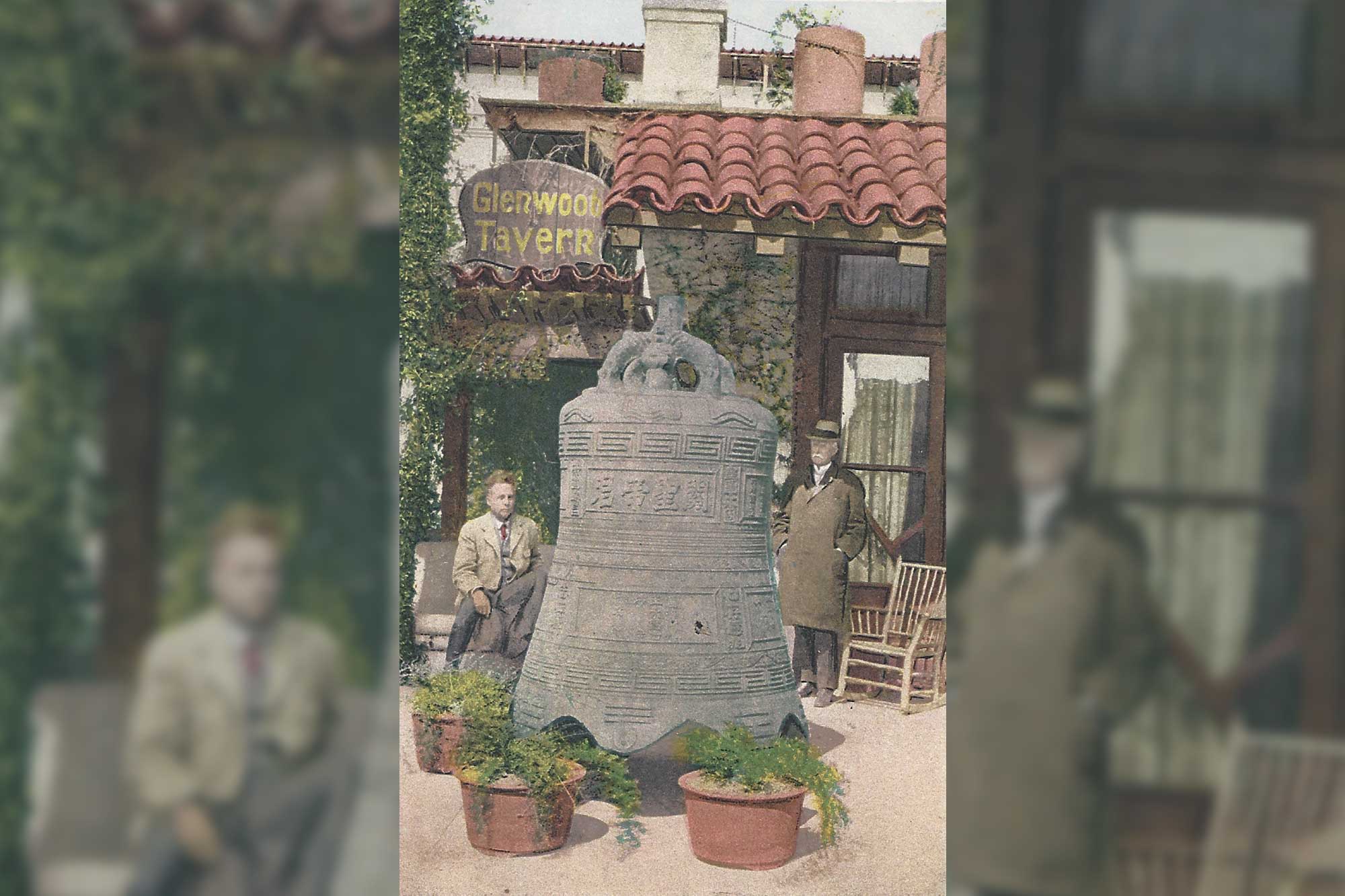
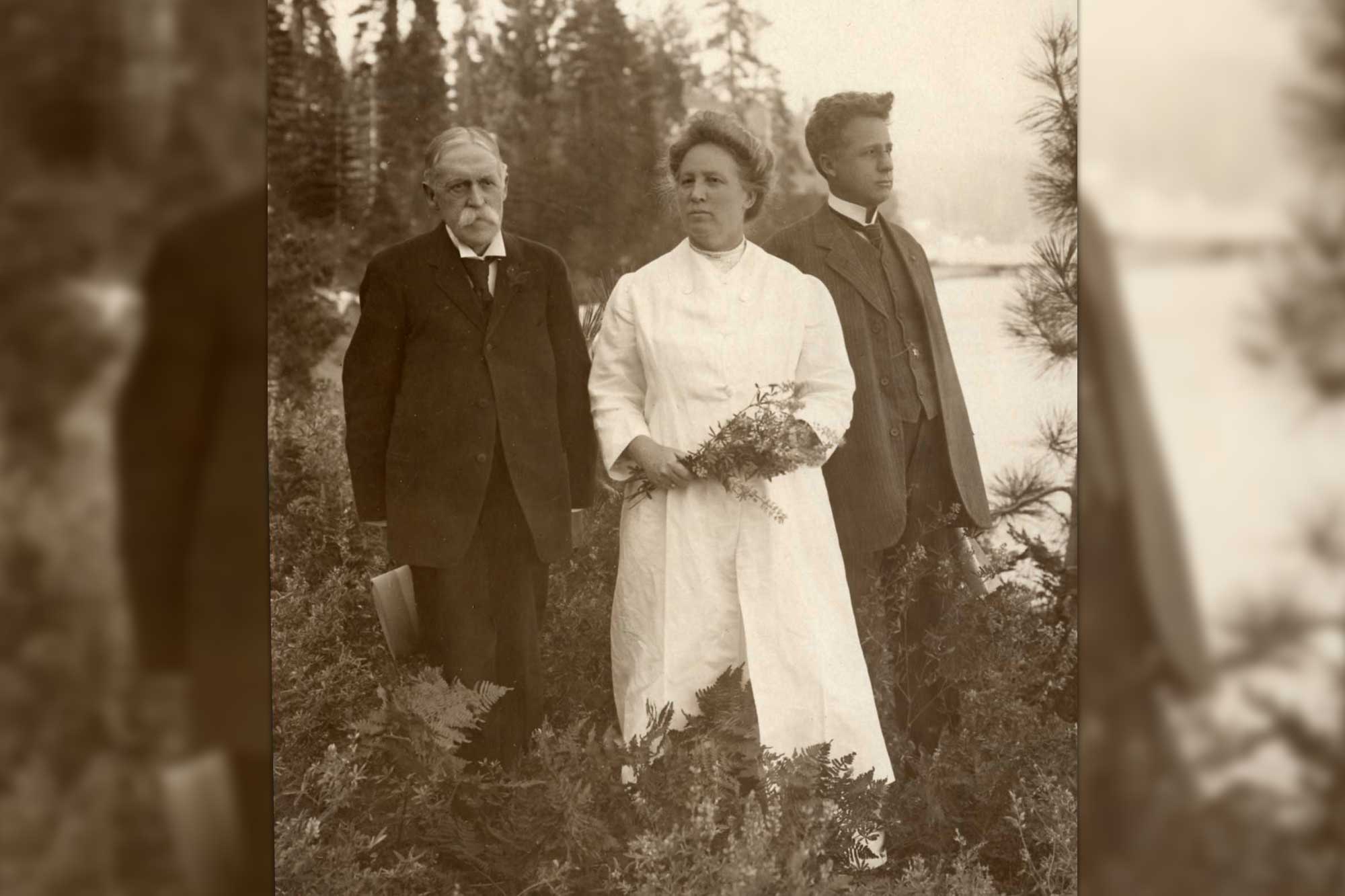
Albert White died in his apartment in the Inn on June 21, 1909. He was buried in Evergreen Cemetery in the Miller family plot. His vast book collection was presented to the Riverside Public Library, which he had helped establish. At his death, a reporter wrote:
In his business relations, Mr. White was a man of the strictest integrity and commanded the confidence of all who knew him in an unusual degree. In his death, Riverside lost one of the most public-spirited and useful citizens, and his friends lost a loyal friend whose memory they will cherish gratefully. (Daily Press, June 21, 1909).
Next time you are downtown Riverside, take some extra time and stroll through the city park in the heart of the city named after this early Riverside mover and shaker, Albert S. White.
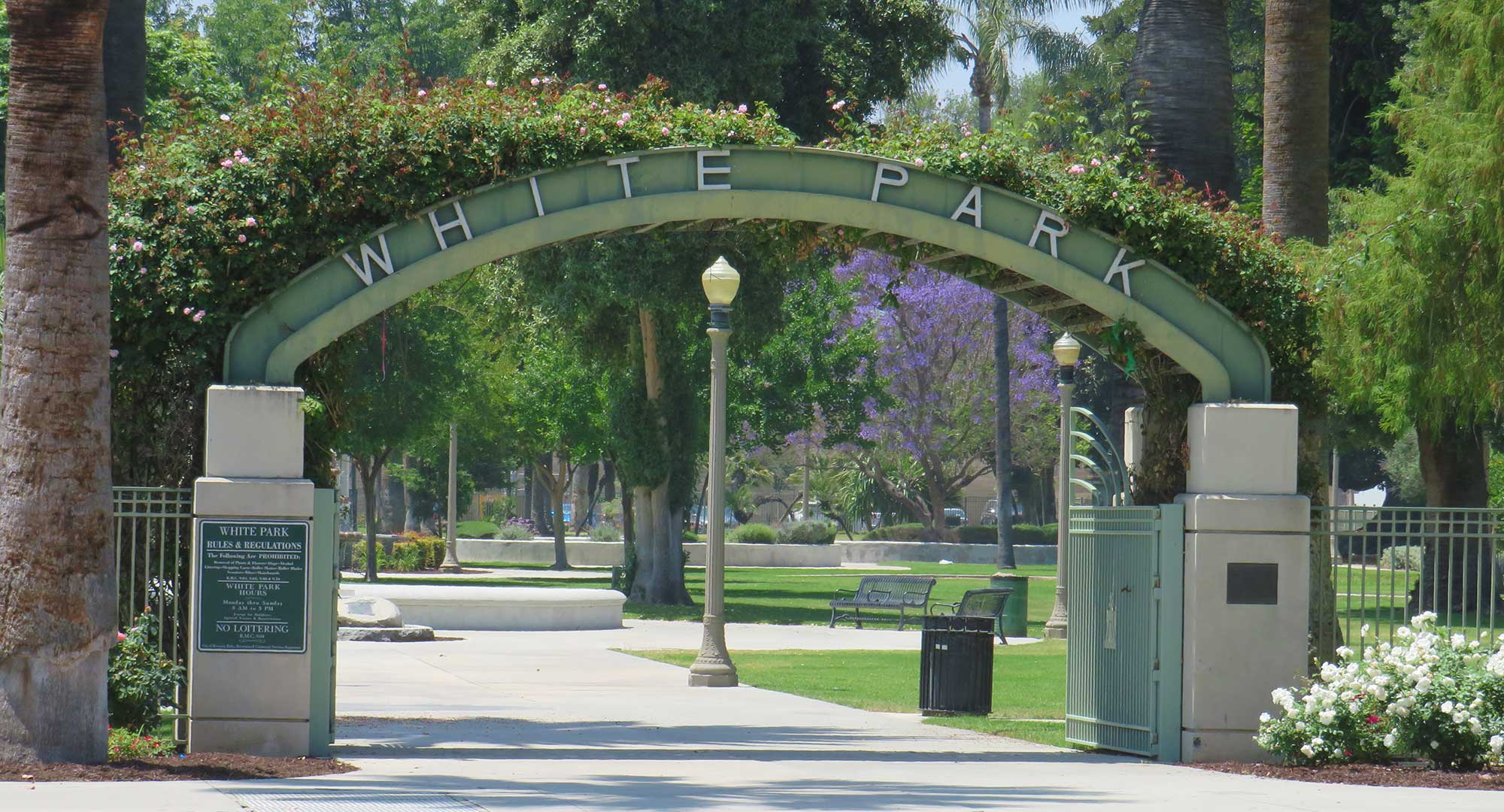
Let us email you Riverside's news and events every morning. For free!